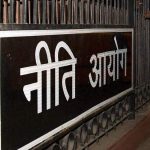One may find a request at the bottom of the social media message – ‘Pl circulate to as many contacts as possible’! And within hours, a message gets viral around the world. We have to verify the authenticity of the message, before passing on to our contacts; which we seldom make.
I received a message from one of my friends through WhatsApp. He had simply forwarded the message, which he received from his reliable friend. The message reads like this: Rahul Gandhi, who has an endless list of advices for PM Modi on how to govern the country – must read the book – “advice & dissent” by former RBI Governor Mr. Y.V. Reddy to understand how Congress misrule brought the Indian economy to the brink of bankruptcy. A post doing the rounds on the internet claimed that India did not borrow any money from the World Bank in the last five years – under the Prime Minister Narendra Modi government.
The WhatsApp message adds: Rajiv Gandhi had left the exchequer empty & the situation was so desperate that Congress had to pledge 47 MTs of gold with England for a loan of just 40 crores. In the 70-year history of Hindustan, the only years in which the Govt of India did not take any loan from World Bank is from 2015 to 2019, under Modi govt. Indian economy was right at the bottom – along with South Africa, Turkey, Brazil & Indonesia. But within just 5 years in 2019 – under PM Modi & BJP, the Indian economy made it to the top 5 list – leaving behind even UK. The message also says: Read “Advice & Dissent” published in 2017, written by Mr. Y.V. Reddy. The message narrates about the leaders of Congress, who now accuse Modi of spoiling the economy of the country. In the 70-years history of Hindustan, there are only 4 years in which the govt. did not take any loan from World Bank.
I doubted the message immediately, as it was impossible that the book published in 2017 can record the financial position till 2019. I checked the facts and found that the viral post is a collection of false and misleading claims, which quoted the name of a former Andhra Pradesh cadre IAS Officer, turned RBI Governor to look like true. Twenty five years ago, in January 1991, as India struggled to finance its essential import of crude oil and fertilisers and to repay official debt, Chandra Shekhar government had managed to get a bit of a breather with the first tranche of $755 million, i.e. Rs.1,71,687 Cr from the IMF, but that wasn’t enough. The Congress, which had provided unconditional support to the government, withdrew its backing in February. The Chandra Shekhar government was unable to present its Budget as scheduled by the end of February. Without a full Budget and a firm commitment to reforms, multilateral institutions such as the IMF and the World Bank, the major lenders then, put a stop to their funding. With a severe liquidity crisis and time running out and the prospects of a default in sovereign payments a real prospect, officials moved a proposal to pledge the gold. Mr.Y V Reddy, then joint secretary in the finance ministry in charge of the balance of payments division, prepared a detailed note. The plan was to send out 20 MTs of confiscated gold given to the SBI for what was known as a sale and repurchase option. Those were desperate times — elections to the Lok Sabha had been called and reserves had slipped to less than Rs 1,000 crore. The then PM Chandra Shekhar said, “Have you left with me any other option.” Rajiv Gandhi was assassinated in Sriperumbudur on May 21 and the then Finance Minister Yashwant Sinha signed the file to mortgage the gold. The gold was transported a few days after polling day, with consignments being air-lifted between May 21 and 31. The new Congress government which came to power in June 1991, headed by Narasimha Rao and with Manmohan Singh as finance minister, too had to raise resources swiftly given the state of the country’s balance of payments. The country had foreign exchange reserves to cover just about three weeks of import. Between July 4 and 18, 1991, the RBI pledged 46.91 MTs of gold with the Bank of England and the Bank of Japan to raise $400 million, i.e. Rs.90.96 Cr. But as the economic situation improved, the government repurchased the gold before December that year and transferred it to the RBI. Interestingly, In 2009, during the UPA government’s tenure, with Manmohan Singh as prime minister, India bought 200 MTs of gold valued at $6.7 billion, i.e. Rs. 31.07 Cr to diversify its assets.
As per reports of the ministry of finance released on 15 September 2020, the Indian government has received three loans worth USD 2.5 billion to support government’s covid-19 response. Clearly, the claim that India didn’t borrow even a dollar falls flat. Further, a detailed year-wise breakup of the money that India owes to the World Bank is available on the Rajya Sabha website.
Availing Long Term loan from international agencies like IMF, World Bank etc to execute infrastructure development is never bad, if the internal housekeeping is in order and the fiscal management is prudent. Hope, all of us must verify the correctness of such misinformation being circulated in Social Media.





































